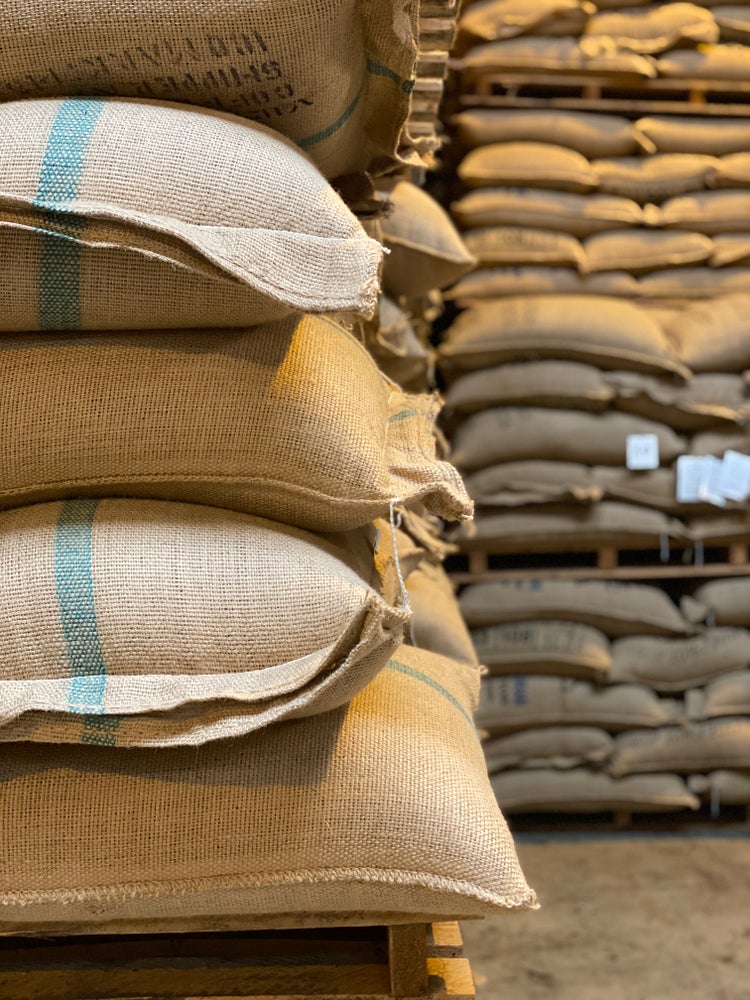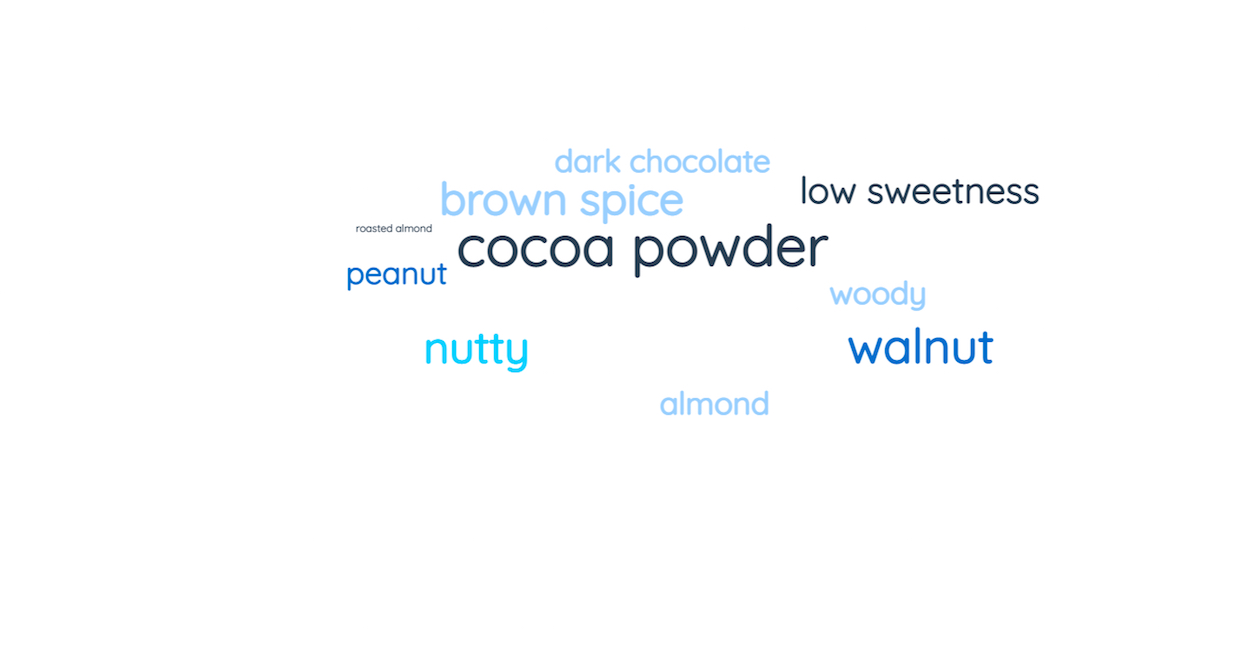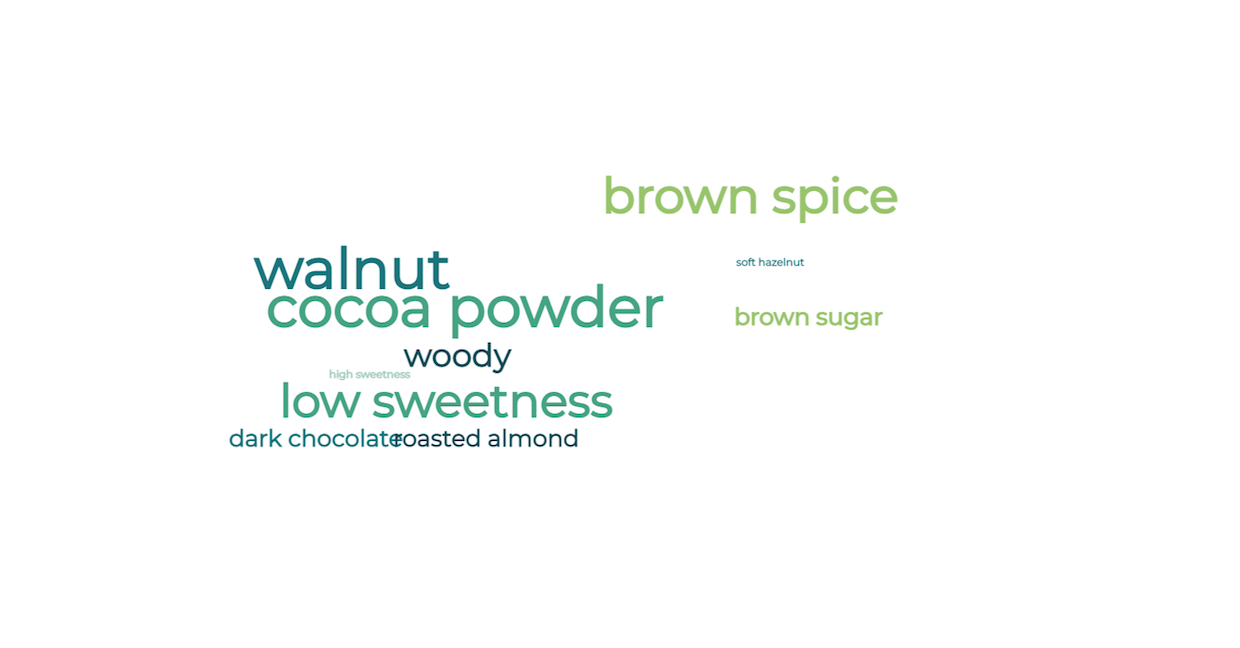We’re always striving for better solutions that save money, reduce environmental impact and maintain the quality of green coffee.
Recently, our quality control (QC) team in Asia Pacific undertook a 9-month test to explore potential ways to maintain coffee quality while minimizing the environmental footprint in the warehousing of coffee. To do this, they evaluated the difference between storage with and without air conditioning (AC).
Key Factors in Storage
There are three factors that influence coffee quality during transportation and storage: oxygen, temperature, and humidity.
Oxygen: Oxygen has such a detrimental effect on coffee that some articles refer to it as a “contaminant.” As coffee interacts with oxygen, it causes the flavor molecules to oxidize and even turn rancid, causing off-flavors and a flat taste.
Temperature: The ideal temperature range for coffee storage is 20-25°C (68-77°F). Temperature impacts coffee by modifying water activity inside the bean. Changes in the energy status of the water molecules in coffee can affect flavor and freshness. In some conditions, vast fluctuations in temperatures can cause condensation inside a bag of coffee, which can ruin coffee.
Humidity: Similarly, studies have shown that environmental humidity, the measure of how much moisture is in the air, can affect coffee by traveling in and out of bags of coffee. Too much humidity can also cause mold or mildew growth, ideal relative humidity (RH) is 60%.
The Experiment
The initial reasons coffee was stored in AC storage were to keep humidity and temperature constant. When the QC team set out to evaluate the impact of AC on warehoused coffees, they wanted to retest this initial hypothesis and determine how cupping quality varies between AC and non-AC storage.
To begin, the team selected a range of coffee grades, both specialty and commercial, to store in two warehouses in Tsuen Wan, Hong Kong — one with AC and one without — for 9 months. All of these coffees were stored in hermetic packaging. The team used an LCD Digital Temperature & Humidity Meter HTC-1 H596 thermometer to record temperature and relative humidity (RH) daily.
Samples were drawn at the end of each month over the course of 9 months. The team drew samples from each bag and checked moisture content, water activity and density. Then, the Hong Kong QC used SCA cupping protocols to evaluate cup quality. Since the purpose was to evaluate quality, not consistency, only two cups were used to cup the coffee. All other SCAA protocols were observed.
The Results
The results were striking: While humidity and temperature in the non-AC warehouse were vastly different from the suggested storage conditions, and from the AC warehouse conditions, the team found no significant difference in cupping scores.
The AC conditions did not delay past crop taste. In both conditions, fading characteristics began to show after 9 to 12 months in storage. In fact, some coffees in the non-AC warehouse had more desirable characteristics after the 9- to 12-month storage period than those stored in the AC warehouse.
Two-way ANOVA analysis, a statistical method commonly used in research to measure the difference between groups, showed no significant differences in water activity, density or moisture content between the two storage conditions.
Packaging Matters
Previous studies have found that cold storage can prolong cup quality. However, there are several key differences in conditions between previous studies and our QC team’s study. Cold storage studies typically involve conditions that are near-freezing. The highest temperature difference between our AC and non-AC warehouses was only 8°C at its highest point in June, and conditions in the AC warehouse were never near freezing.
Additionally, these studies were conducted on coffees that were stored in packaging that was not hermetically sealed. Several studies have found that, rather than storage conditions, the best indicator of a coffee’s longevity was packaging. In those studies, vacuum packaging — removing air and creating a hermetic seal — proved to be the best way to preserve coffee quality. The bags used for hermetic sealing are impervious to moisture.
In the study our QC team conducted, coffees stored in hermetic packaging maintained desirable flavors, including chocolate, vanilla, citrus and red fruits. Conversely, studies found that the coffee stored in the jute sacks displayed more undesirable characteristics such as papery and jute. These results are most likely due to the fact that coffee stored in non-hermetically sealed bags were exposed to oxygen, which caused the flavor-producing oils to oxidize and lose their flavors.
Reducing Our Footprint
The results from this study clearly suggest that we may be able to reduce our environmental footprint while maintaining coffee quality by reducing energy usage in the warehouse.
By moving coffees to a non-AC storage facility, we can ideally reduce overall storage costs, minimize our environmental footprint and still deliver excellent-quality coffees.
[Editor’s note: This story is an adaptation of an original piece published by Sucafina Specialty. It is shared here for the potential benefit of our readers. Daily Coffee News does not publish paid content or sponsored content of any kind. Any views expressed in this piece are those of the author and are not necessarily shared by Daily Coffee News.]
Celine Nguyen and Victoria Brown
Celine Nguyen is the Quality Controller and experimenter for Sucafina Specialty Australia. Victoria Brown is Sucafina Specialty’s Content Marketer. Together, they write innovative articles about Quality Control.
Comment
4 Comments
Comments are closed.










Interesting! I guess hermetic bags work very well to keep green coffee beans properties.
Thanks for sharing this info.
We started storing green coffee for distribution in the Denver Colorado area. The warehouse used to be an old pole barn with 12” diameter poles that were used to build the original barn. We removed both interior and exterior walls and maintained the 12” poles and used 12 inch wide studs, used metal panes for both interior and exterior walls as well as twelve inches of insulation. We have no air conditioning or humidifier. It has never gotten above 75 degrees and humidity levels hover around 60 – 72%. Last week it was 103 degrees outside. We store both jute and grain pro beans. Colorado is very dry and arid, I take weekly moisture readings and see very little movement in fact I have one bag of Honduras that has been stored for two years in a Jute bag and it registered a 10.3% moisture reading yesterday! I would like to tell you that we were smart and planned for this result, I would be lying tho we were just lucky! I’ll take luck any day. The best I can figure it’s the twelve inches of insulation, keeps the heat out and maintains the moisture in the air that is given off of the beans that are stored in the jute bags. Have great days one and all….
Michael, did you use 12 inches insulation in the roof as well as the walls?
Celine and Victoria, when you say hermetically sealed, do you mean just in GrainPro/Ecotact, or actually vacuum-packed?
Hey Andy, No the rafters in place were 6 inches. The person who originally built the barn apparently didn’t own a tape measure, level or a square and if they did they didn’t know how to use them. So there were gaps in many places but we heavily filled in where needed